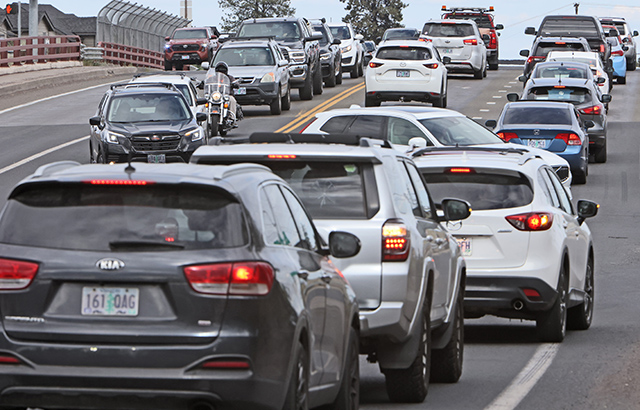Startup believes remote control for driverless cars could make them safer
Published 12:00 am Sunday, April 1, 2018
Imagine sitting in a driverless car as it approaches a construction zone.
A worker tries to wave the vehicle into the oncoming traffic lane to get around an obstruction, but the vehicle does not know how to navigate the situation.
Trending
It’s a type of scenario proving particularly difficult for autonomous vehicle developers, and it’s the kind of issue that appears to demand a solution after a recent fatal crash involving an Uber-operated autonomous SUV in Arizona.
Those who talk about autonomous driving development refer to situations like the construction zone scenario as edge cases, and they are obstacles that Elliot Katz, chief strategy officer and a co-founder of Silicon Valley startup Phantom Auto, says must be overcome for the technology to be viable.
“This technology has gotten to an unbelievable point, but it’s not 100 percent yet,” Katz said. “In the same way that you wouldn’t get into your car right now just driving yourself if you thought it would only operate 98 percent of the time, people don’t want to do that with AVs either.”
Katz believes his company has a solution to the edge case problem by keeping humans “in the loop” in the form of a remote control operator who would take control when needed. He spoke before the Uber crash, but offered some prescient comments, noting that he and others firmly believe autonomous vehicles have the potential to save lives.
“Everyone wants these vehicles on the road as soon as possible, but at the same time, lawmakers want to make sure that this testing and deployment is done in an optimally safe manner,” Katz said. “If we were to deploy these and not have a remote operator, some sort of human in the loop, and there’s some horrible accident, it doesn’t matter if that accident is caused by (any particular automaker), it pushes back the entire space and all the momentum that we’ve had going for the last number of years,” Katz said.
The fallout from the Tempe crash that killed Elaine Herzberg of Mesa, Arizona, as she crossed a street while walking her bike is still being assessed, but Arizona’s governor has already ordered a halt to Uber’s autonomous testing on the state’s roads. In addition, calls have been renewed for more testing regulations nationwide even as public road testing is already underway in other states. A safety, or backup driver, was in the Uber vehicle but appeared to be looking down before the crash.
Trending
Uber apparently will not seek to renew its testing permit in California, which is set to allow autonomous vehicles to test on public roads without safety drivers beginning Monday. Those new California regulations, announced last month, will require a remote operator, something that Katz says Phantom Auto can supply. Phantom, which formed a year ago, has five customers, although it has not said who they are.
Regarding the new California regulations, a spokeswoman for the state’s Department of Motor Vehicles said that as of Wednesday, no one had applied for permits under them.
Phantom’s efforts rely on a person seated in a control room observing a bank of video monitors with various camera views from the vehicle and a steering wheel to operate it remotely. Under normal conditions, the operator would be called upon when needed and could talk to those in the car.
The system can use multiple cellular providers to allow the operator to control a vehicle hundreds of miles away, a demonstration carried out successfully in the rain during the Consumer Electronics Show in Las Vegas in January. A remote operator in Mountain View, California, was in control of a Lincoln MKZ in Las Vegas.
In a review of autonomous vehicle demonstrations at the show, an editor for MIT Technology Review described the experience of riding in the Phantom car:
“The operator, who was limited to 25 miles per hour, navigated the car through rain and packed streets at night, taking me and three Phantom Auto employees through a gas station and a couple of other obstacles that are difficult for self-driving cars. Though we got through it all unscathed, the driver’s hesitance was palpable, both while moving across lanes of traffic and while waiting to enter them.”
Nonetheless, Phantom Auto is built on the promise of what is possible using technology that Katz said was assumed to be unworkable not long ago.
“Any situation that a human can drive through we can drive through because the remote driver is not powered by any sort of autonomous technology. It’s just the same as a human being in your car,” Katz said.








